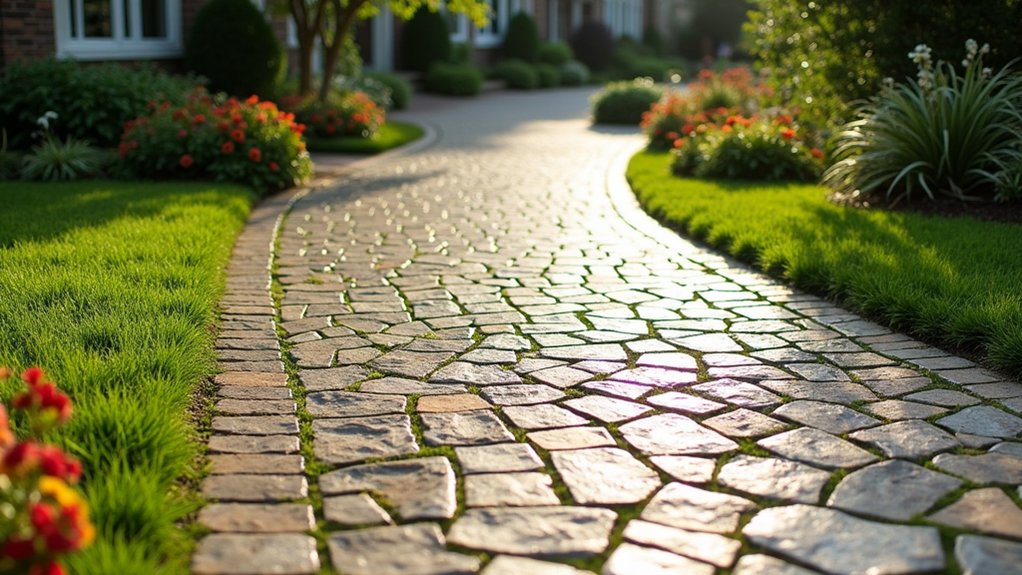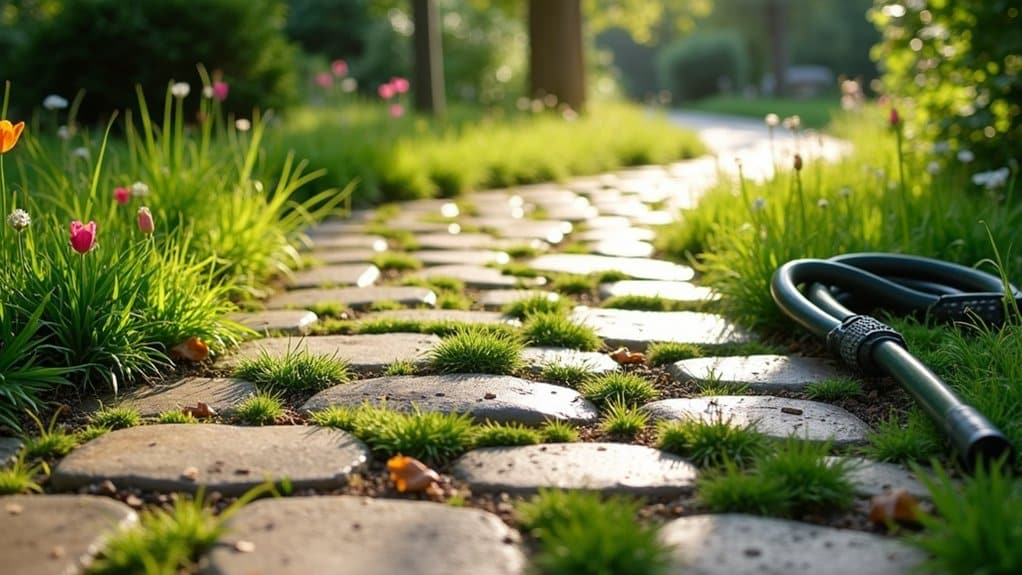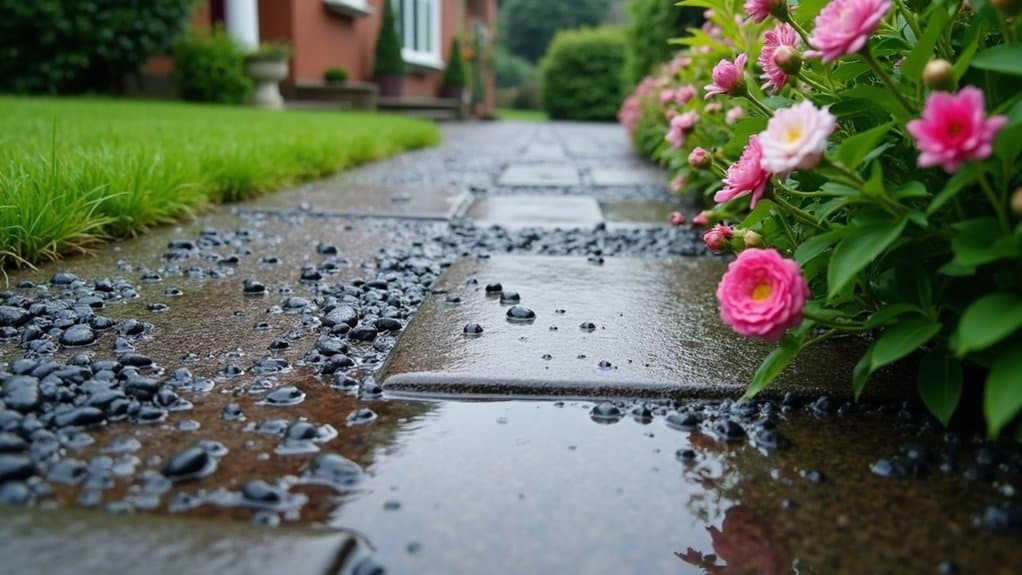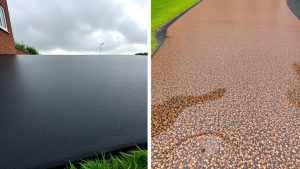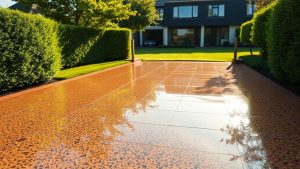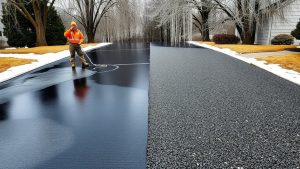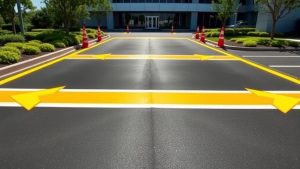A permeable driveway allows water to pass through its surface, effectively managing stormwater runoff and boosting groundwater recharge. It typically uses materials like permeable pavers or porous asphalt, built on a layered structure that incorporates storage and filtration elements. By reducing surface water accumulation, these driveways enhance local water quality and lessen the risk of flooding. If you’re interested in how permeable driveways are installed and their benefits, there’s much more to discover.
Table of Contents
ToggleKey Takeaways
A permeable driveway allows rainwater to filter through its surface, helping to manage stormwater runoff and reduce the risk of flooding. It’s made from materials such as permeable pavers, porous concrete, or gravel that enable water to soak in.
The structure typically includes a top layer for drainage, a storage layer to hold water, and a geotextile fabric to prevent blockages. These driveways also support groundwater replenishment and enhance local water quality by filtering out pollutants as water passes through.
To keep a permeable driveway functioning well, regular maintenance is key. This includes clearing away debris and checking for any blockages, especially after heavy rainfall.
Definition of Permeable Driveways
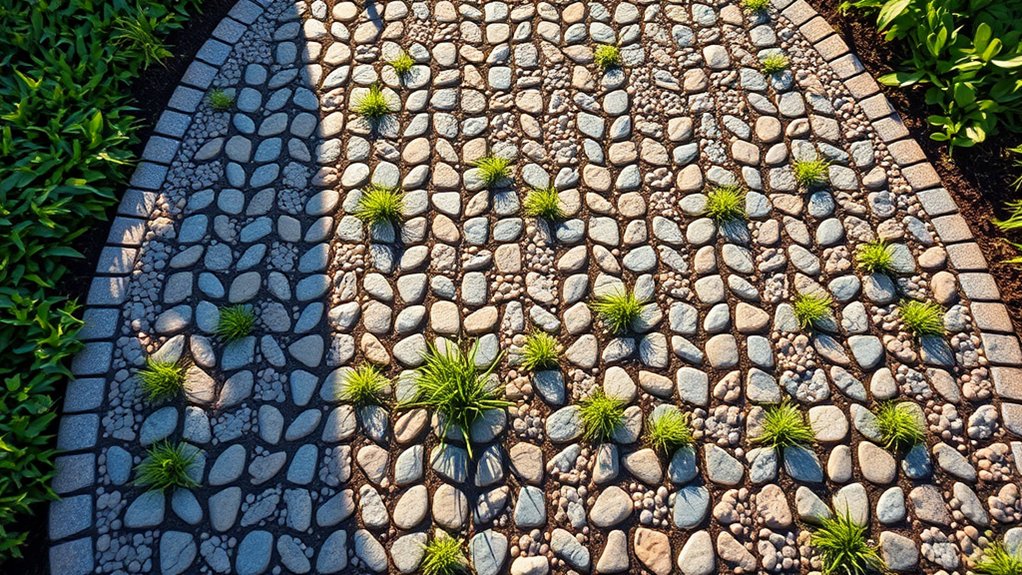
Permeable driveways are designed to allow water to seep through, helping to manage stormwater runoff effectively. Unlike traditional driveways, these surfaces use materials such as concrete pavers, plastic grids, and pervious concrete, which feature gaps or porous structures that enable water to pass through. This design reduces runoff and helps prevent flooding, improving environmental sustainability by filtering pollutants. Additionally, permeable driveways contribute to recharging groundwater supplies, which is crucial for maintaining healthy ecosystems. Permeable driveways can be suitable for both residential and commercial spaces, with a range of materials available to suit different styles. Whether you prefer a modern look or something more traditional, you can find options that not only function well for stormwater management but also enhance the overall appearance of your property.
Purpose and Benefits
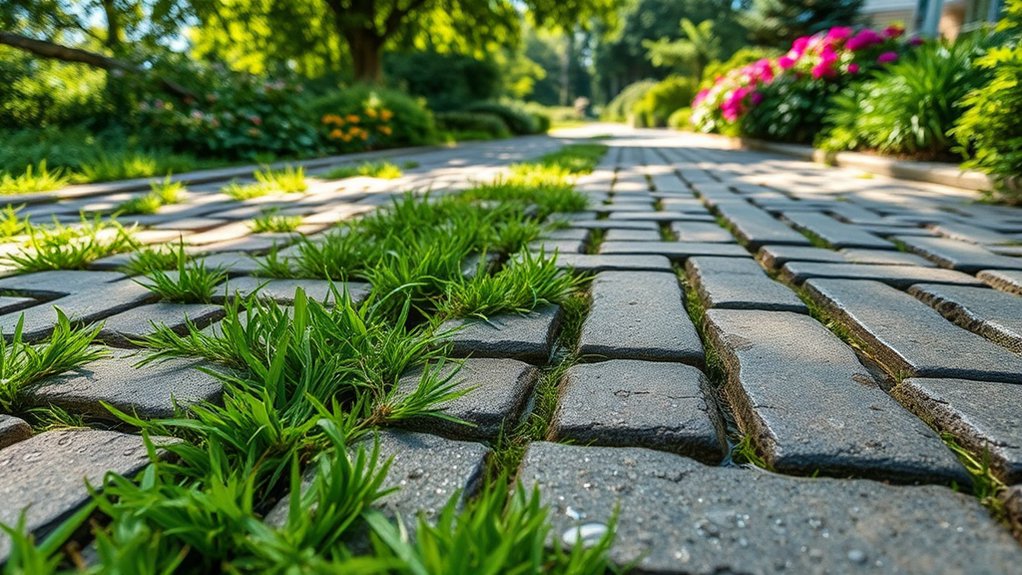
Traditional driveways can worsen stormwater runoff, but permeable driveways offer a practical solution. They allow rainwater to soak through, reducing the amount and speed of runoff, which helps replenish groundwater. This approach maintains natural water cycles, prevents soil erosion, and lowers flood risks. Incorporating permeable driveways into urban design promotes sustainability, as they support Sustainable Urban Drainage Systems that manage flood risk effectively. They improve air quality, lessen the urban heat island effect, and filter out pollutants from rainwater. Additionally, permeable pavers capture and drain water into the soil, further enhancing their benefits. In colder regions, they also reduce the need for road salt, benefiting the environment. By choosing permeable driveways, you not only support a healthier ecosystem but may also enhance your property’s value and ensure compliance with local stormwater regulations.
Common Materials Used
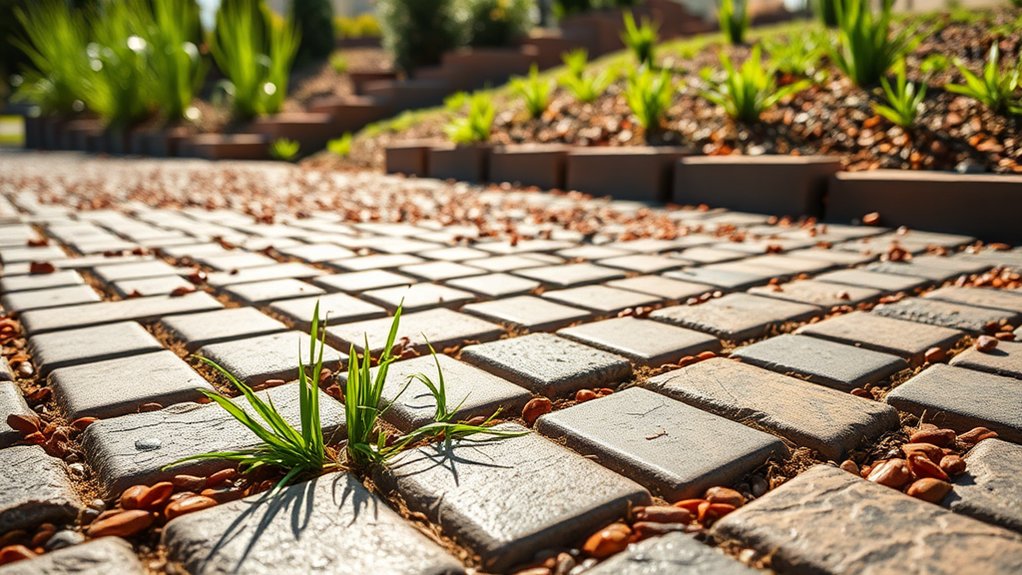
Choosing the right materials is crucial for building an effective permeable driveway. You can use permeable pavers, such as concrete, plastic, or stone, which have gaps that help with water drainage. Porous concrete is another good option, designed with voids for managing runoff while looking like standard concrete. Porous asphalt offers a similar look and allows water to flow through it. Gravel pavers help stabilise loose gravel in a permeable system, improving both durability and permeability. For a more modern solution, consider resin-bound systems that provide strength without hindering drainage. Each material has its own benefits, including durability and environmental advantages, so it’s important to choose the best one for your specific needs. Additionally, adequate drainage is essential to ensure the longevity and effectiveness of these materials in managing water runoff. Using permeable surfaces can also mitigate water runoff and flooding, making them an environmentally friendly choice.
Design and Structure

When designing a permeable driveway, it’s important to use a layered construction method that efficiently manages water drainage.
Choosing the right materials is key to ensuring the driveway remains strong and allows water to pass through easily.
Incorporating drainage features will improve the system’s ability to cope with stormwater runoff, preventing issues like flooding or puddles.
For instance, using gravel or permeable blocks can help achieve this while enhancing the driveway’s appearance. Additionally, employing a water filtration system can further enhance water quality and support effective stormwater management.
Layered Construction Approach
Using a layered construction approach is crucial for maximising the performance and lifespan of a permeable driveway. Each layer has a specific function that contributes to stability and durability, as well as effective water management.
- Pavement Surface Layer: This layer features pores that allow water to seep through.
- Reservoir Storage Layer: Made of coarse stone aggregates, this layer stores the water that has infiltrated.
- Geotextile Fabric Layer: This fabric separates the reservoir from the soil beneath, helping to prevent clogging.
- Base/Subbase Layer: This layer offers vital support and helps distribute weight evenly.
When installing, it’s important to avoid compacting the soil and consider using geocells to enhance structural integrity.
This structured layering not only improves drainage but also strengthens the driveway against traffic, ensuring it remains reliable and durable over time.
Material Selection Criteria
When choosing materials for a permeable driveway, it’s vital to focus on quality and durability to ensure long-lasting performance. Assessing durability will confirm that materials can endure environmental conditions and traffic. It’s important to consider both structural integrity and aesthetic appeal.
| Material Type | Key Characteristics |
|---|---|
| Permeable Pavers | Hard-wearing, durable, and available in various designs |
| Gravel | Cost-effective and provides excellent permeability |
| Geocell Systems | Offers strong support and enhances stability |
| Geotextile Fabric | Aids in filtration and prevents fine particles from accumulating |
| Porous Concrete | Durable surface that allows water to drain effectively |
Make an informed choice to create a functional and attractive driveway.
Drainage Design Elements
To ensure effective drainage in your permeable driveway, it’s vital to consider key design elements that impact both functionality and durability.
A well-designed drainage system is crucial for optimal performance. Here are the main factors to keep in mind:
- Surface Slope: Aim for a slope of 1% to 5% to ensure proper water flow.
- Underdrain Installation: Incorporate perforated pipes to aid drainage, connecting them to local stormwater systems.
- Reservoir Depth: Ensure the stone reservoir is deep enough to store stormwater effectively.
- Traffic Load Considerations: Design the driveway to withstand expected traffic to preserve its structure.
- Cleanout Access: Include cleanout pipes for straightforward maintenance and inspection.
Stormwater Management Capabilities
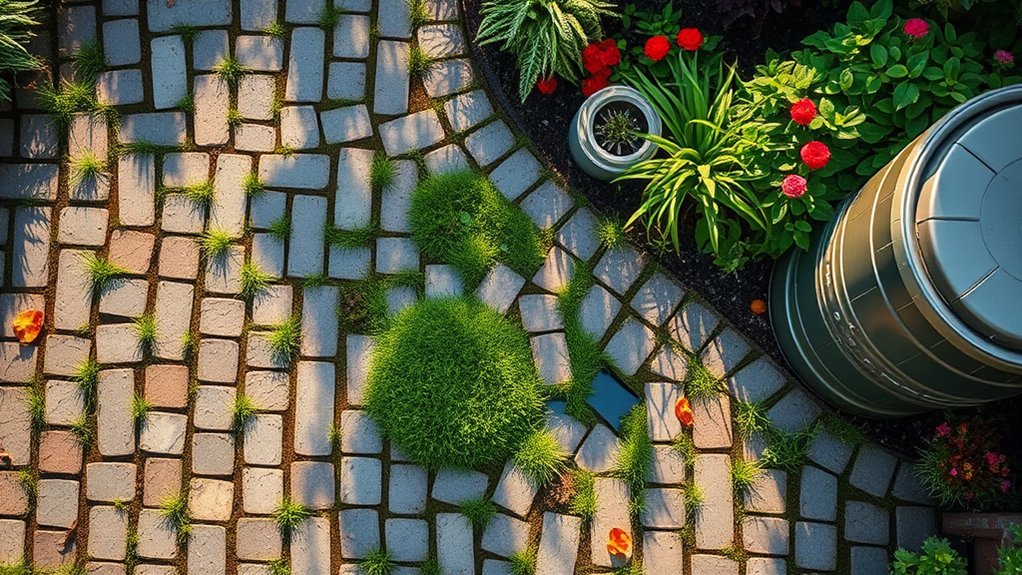
Permeable driveways are effective at reducing runoff by allowing rainwater to soak into the ground. This significantly decreases surface water build-up, which helps to lower the risk of flooding.
Additionally, these driveways support groundwater recharge, contributing to sustainable water management. By using permeable materials, you play a part in fostering a healthier water cycle and improving local water quality.
Runoff Reduction Techniques
Traditional driveways can worsen runoff issues, but using runoff reduction techniques with permeable driveway systems can help.
These systems effectively manage stormwater and significantly reduce surface runoff.
- Gravel or sand layers improve water infiltration beneath the surface.
- Porous materials such as permeable concrete allow for quick drainage.
- Vegetated systems enhance the look of your driveway while increasing permeability.
- Stormwater infiltration directly reduces runoff during heavy rainfall.
- Erosion control is achieved by slowing down water, protecting your landscape.
Groundwater Recharge Benefits
Using permeable driveways to reduce runoff not only cuts down on surface water but also significantly aids groundwater recharge.
These driveways allow rainwater to seep into the soil, replenishing underground aquifers. In urban areas, where hard surfaces prevent natural water absorption, permeable driveways help address this problem, supporting urban water management.
They also filter out pollutants, enhancing water quality before it reaches groundwater sources. This not only protects ecosystems that depend on groundwater but also lessens dependence on surface water, helping to stabilise water levels.
Water Filtration Mechanisms
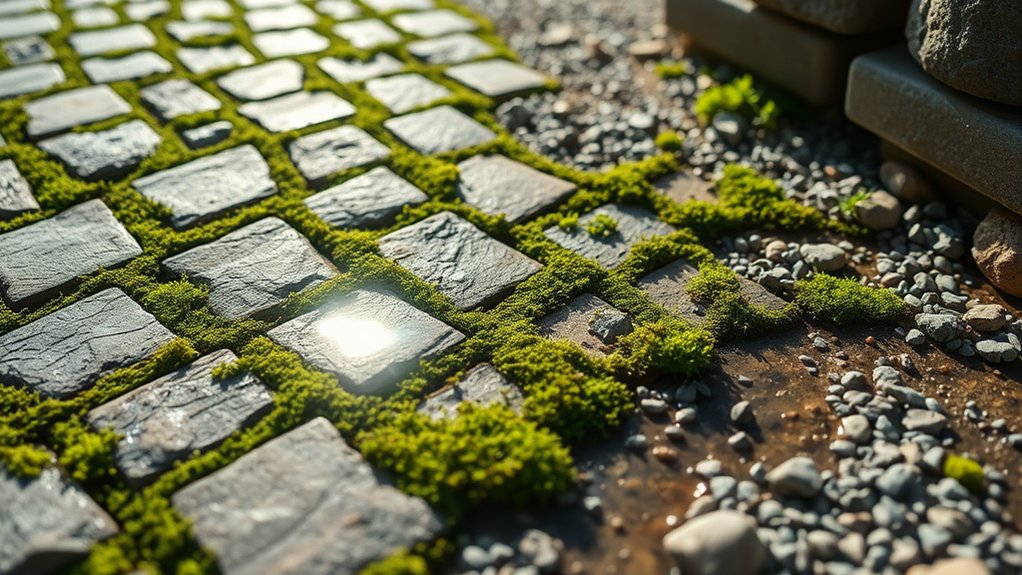
Water filtration mechanisms in permeable driveways are essential for managing stormwater runoff and improving groundwater quality. These systems employ various layers to ensure effective filtration and support natural purification processes.
As water seeps through, it travels along designated pathways through aggregate stone layers, which act as filters to trap pollutants and allow clean water to replenish aquifers.
- Aggregate stone layers provide effective filtration.
- Geotextile fabric stops sediment from entering.
- Contaminants like oil and debris are filtered out.
- Natural biological processes help break down harmful substances.
- Purified water enhances groundwater health.
Installation Process
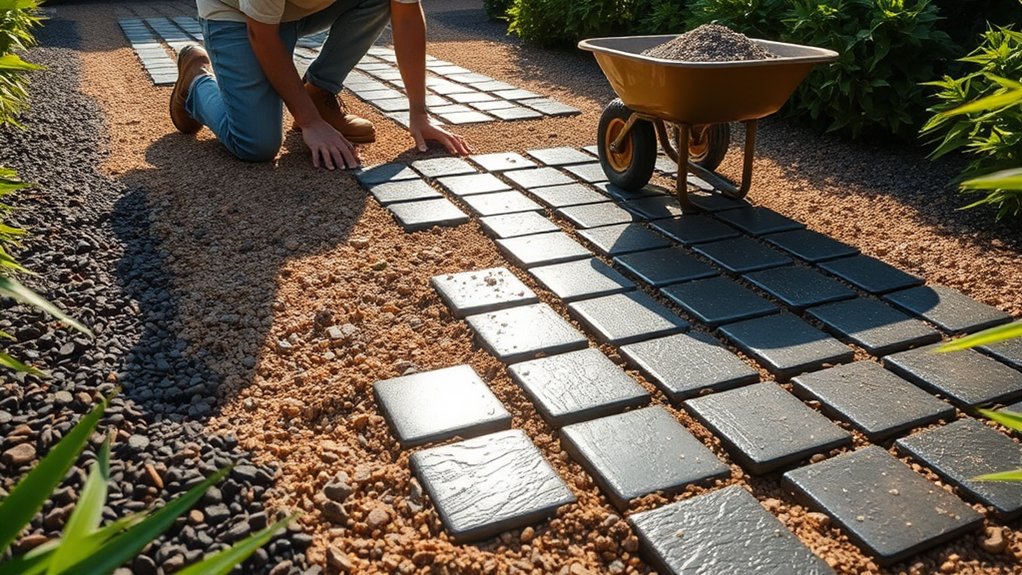
For a successful permeable driveway installation, it’s essential to focus on proper site preparation and material choice.
Start by removing any existing surface and excavating the area to the required depth, considering load and soil conditions.
For a stable foundation that promotes effective drainage, select suitable layers and materials, such as geotextile fabric and clean gravel.
Site Preparation Steps
Before you start laying your permeable driveway, proper site preparation is crucial for a stable and functional foundation.
Begin by marking the area and excavating to the required depth, usually between 9 to 18 inches. Remove all vegetation and existing materials to ensure a clean base.
- Lay geotextile fabric to separate the soil from the aggregate base, which enhances stability.
- Compact the soil to prevent settling.
- Check the alignment and level of the site.
- Inspect all materials to ensure they meet quality standards.
- Consider future maintenance and the environmental impact of your driveway.
Layering and Material Selection
Once you’ve prepared the site for your permeable driveway, the next step is to focus on layering and selecting the right materials for optimal performance.
Begin with a geotextile fabric to prevent soil mixing and stabilise the base. Next, lay a compacted aggregate base layer made of clean stone to ensure stability and proper drainage.
For the bedding layer, use coarse stone to create a level surface for the pavers. When placing the pavers, ensure consistent spacing for effective water percolation.
Finally, fill the joints with sharp, uniform gravel to improve water passage. Selecting durable materials is crucial; using the right layering techniques and robust materials will help maintain your driveway’s integrity and functionality over time, preventing settlement issues.
Maintenance Requirements
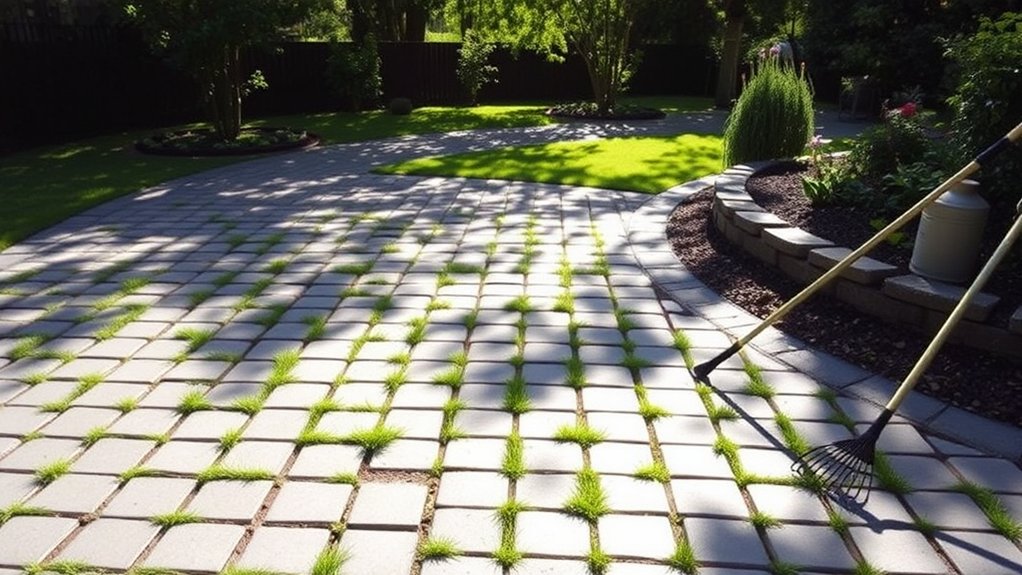
Maintaining a permeable driveway is essential for its performance and longevity.
Here are key maintenance tasks to keep your driveway in top condition:
- Regularly sweep or vacuum to remove dirt and leaves.
- Check pavers after heavy rain for blockages or damage.
- Use a shop vacuum for a thorough clean at least twice a year.
- Clear the joints to prevent build-up and ensure proper drainage.
- Keep nearby plants tidy to avoid debris piling up.
Environmental Advantages
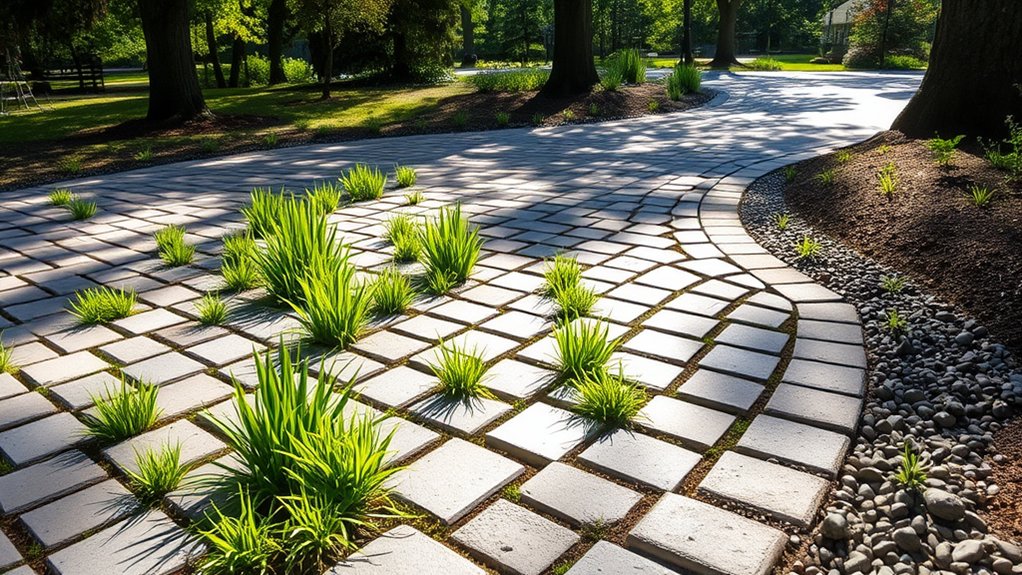
Permeable driveways provide important environmental benefits that support sustainable urban development. They allow rainwater to seep into the ground, reducing stormwater runoff and easing the burden on drainage systems, which helps to prevent flooding. This practice also enhances groundwater recharge and improves water quality by filtering out pollutants as water moves through the materials beneath the surface.
Moreover, permeable surfaces help combat the urban heat island effect, cooling the surrounding areas and lowering energy use. This not only protects local climates but also fosters biodiversity and supports healthy watersheds.
Economic and Aesthetic Benefits
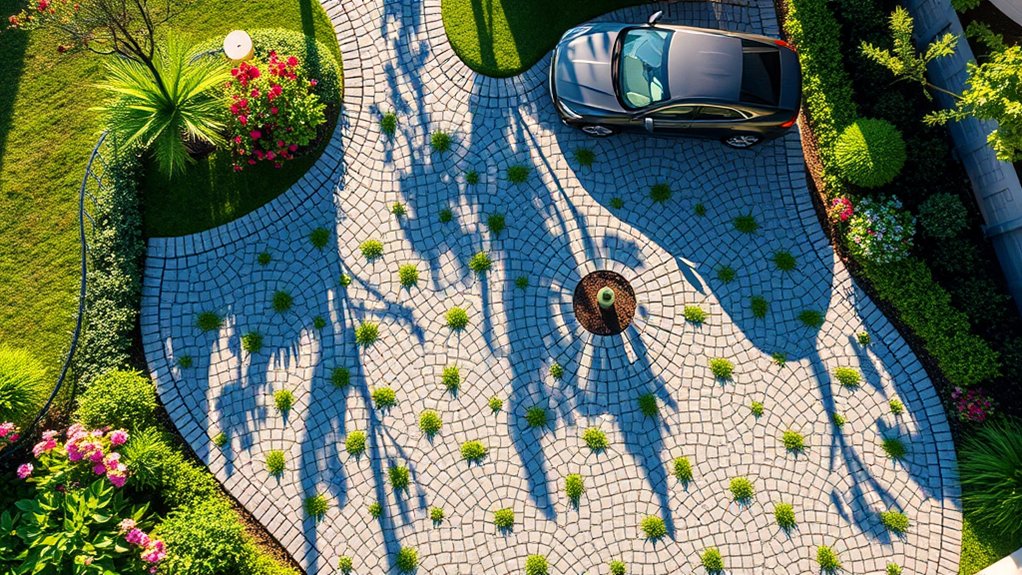
Investing in a permeable driveway not only improves your property’s appearance but also brings notable financial benefits. When you compare costs, you’ll see that these driveways can lower long-term expenses while keeping up with current design trends.
- Infrastructure Savings: Reduce costs associated with stormwater management.
- Lower Maintenance Costs: Enjoy decreased upkeep over time.
- Design Flexibility: Tailor your driveway to suit your style.
- Variety of Materials: Opt for pavers, gravel, or porous concrete.
- Increased Property Value: Enhance your home’s worth with eco-friendly features.
While the initial investment may be higher, the long-term savings and aesthetic advantages make permeable driveways a smart and attractive choice for your home.
Compliance With Local Regulations

When considering a permeable driveway, it’s essential to understand how compliance with local regulations can affect your project. You may encounter regulatory challenges if your design doesn’t meet specific local codes. Monitoring compliance is crucial to ensure your driveway meets stormwater management standards, which many areas now enforce.
Here’s a brief overview of compliance factors:
| Regulation Type | Key Points | Examples |
|---|---|---|
| Local Planning Codes | Must align with stormwater management | Minimum permeability requirements in your area |
| Council Guidelines | Specific rules for installation and use | Standards set by your local council |
| Environmental Regulations | Design and performance standards | Flood risk assessments in flood-prone zones |
Make sure to check with your local council to ensure your driveway project complies with all necessary regulations.
Frequently Asked Questions
How Do Permeable Driveways Affect Local Wildlife?
Permeable driveways benefit local wildlife by aiding groundwater recharge and encouraging plant growth. This creates natural corridors for animal movement and improves food sources, which helps support biodiversity and lessen urban pressures on wildlife. For instance, a permeable driveway can allow rainwater to filter through, replenishing nearby soil and plants, which in turn attract insects and birds.
Can Permeable Driveways Handle Heavy Vehicle Traffic?
Permeable driveways are not suitable for heavy loads. Their surface isn’t durable enough to withstand constant truck traffic. For best results, use them in low-traffic areas and design them for light vehicles only. For example, if you have a standard family car and occasional visitors, a permeable driveway would work well, but avoid using it for delivery vans or HGVs.
What Is the Lifespan of a Permeable Driveway?
A permeable driveway typically lasts between 20 to 30 years, depending on factors such as the quality of materials used and the installation process. To maximise its lifespan and performance, regular maintenance is essential. Simple tasks like cleaning and periodic inspections can significantly enhance its durability, ensuring it remains effective for years to come.
Are Permeable Driveways Suitable for All Climates?
Permeable driveways aren’t suitable for every climate. In colder regions, it’s crucial to consider how seasonal changes can affect performance. For example, if not designed properly, frost heave can cause significant damage. Ensuring effective drainage is vital to avoid such issues.
How Do I Choose the Right Material for My Driveway?
To select the right material for your driveway, think about both appearance and durability. Assess how each option matches your property’s style while also considering local weather conditions. For example, block paving offers a classic look and can endure heavy rain, while gravel provides a more rustic charm but may require more maintenance. Striking the right balance between aesthetics and practicality will ensure your driveway looks good and lasts for years.
Conclusion
A permeable driveway enhances your property’s practicality while allowing rainwater to drain through, much like a natural stream. By effectively managing stormwater, you contribute to environmental sustainability and improve your landscape’s appearance. Think of it as a green pathway that connects your home to a more resilient future. Investing in a permeable driveway means investing in a better tomorrow.
Discover the secrets to the durability of permeable driveways and essential maintenance tips that could significantly extend their lifespan.
Learn the essential maintenance tips for permeable driveways and discover how neglecting them can lead to costly repairs.
Find out which driveway materials excel in handling UK rain and discover the surprising benefits that could enhance your property.

